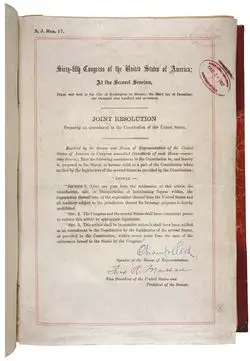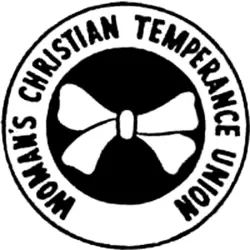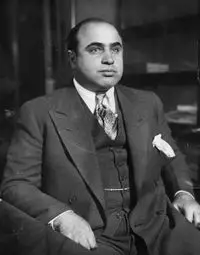Difference between revisions of "Why did the United States pass and then repeal the constitutional amendment prohibiting alcohol"
| Line 13: | Line 13: | ||
Throughout the antebellum period, there was palpable tension between teetotalers (those who wanted complete abstinence from alcohol) and the more traditional view that drinking was a normal social activity. As the nation tore itself apart over the issue of slavery, little meaningful progress came on the temperance front, although the movement slowly increased its membership throughout the 1800s. | Throughout the antebellum period, there was palpable tension between teetotalers (those who wanted complete abstinence from alcohol) and the more traditional view that drinking was a normal social activity. As the nation tore itself apart over the issue of slavery, little meaningful progress came on the temperance front, although the movement slowly increased its membership throughout the 1800s. | ||
| − | == | + | ==What was the Women’s Christian Temperance Union (WCTU)? == |
[[File:Wctu_logo.png|left|250px|thumbnail|Women's Christian Temperance Union emblen]] | [[File:Wctu_logo.png|left|250px|thumbnail|Women's Christian Temperance Union emblen]] | ||
Perhaps the clearest examples of how views regarding alcohol shifted after the Civil War were physically present on the landscape and visible in American politics. The introduction of water drinking fountains in urban areas and the influence of organizations like the Women’s Christian Temperance Union represent the rise of ideas that would continue into the 20th century as part of the Progressive Movement. For much of human history, access to clean drinking water presented a significant engineering challenge. The Romans brought water to the heart of major urban areas through aqueducts, and the same public health problems that inspired these engineering marvels continued to plague cities. As a result, drinking water in many cities was unsafe throughout the 19th century. | Perhaps the clearest examples of how views regarding alcohol shifted after the Civil War were physically present on the landscape and visible in American politics. The introduction of water drinking fountains in urban areas and the influence of organizations like the Women’s Christian Temperance Union represent the rise of ideas that would continue into the 20th century as part of the Progressive Movement. For much of human history, access to clean drinking water presented a significant engineering challenge. The Romans brought water to the heart of major urban areas through aqueducts, and the same public health problems that inspired these engineering marvels continued to plague cities. As a result, drinking water in many cities was unsafe throughout the 19th century. | ||
Revision as of 19:17, 28 December 2020
Americans have a complicated relationship with alcohol. Even before they established Plymouth, William Bradford lamented that the puritanical Pilgrims were ready to go to the mainland as their “victuals [were] much spent, especially our Beere (sic).” Both Virginia and Plymouth had vibrant alcohol industries. During the colonial period, many backcountry farmers found distilling spirits or fermenting cider to be effective ways of preserving their agricultural production. The heavy reliance on molasses, rum, and sugar in the colonies also created an interwoven trade network crisscrossing the Atlantic Ocean, providing a source of income and building dependencies across the European colonial holdings.
Through the revolution, major political and social leaders drank alcohol and extolled its virtues as part of the natural social process. However, this began to change with the advent of industrial production and the rise in religiosity fueled by the Second Great Awakening. Throughout most of the 19th century, Temperance (the desire to moderate and restrain from all sorts of excesses, but mostly alcohol) was one of the most important social issues of the day. With the Second Great Awakening and the social movements of the 1820s and 1830s, alcohol became a scapegoat for a wide range of social problems that included joblessness, domestic abuse, immorality, and declining adherence to religious beliefs.
Why did Americans want to prohibit alcohol?
The Second Great Awakening also advocated the belief that humans could be individually reformed with effort and proper instruction to bring about a perfect society on earth. This foundational belief in human society's perfectability sparked wide-ranging reform movements, including attempts to reform prisons and education systems, expand suffrage rights, and abolish slavery. As part of these wider efforts, Temperance first encouraged moderation in the consumption of alcohol. From this start, a wider acceptance of controlling the amount people drink and the increasingly common view of inebriation as sinful began to change the American relationship with alcohol.
Throughout the antebellum period, there was palpable tension between teetotalers (those who wanted complete abstinence from alcohol) and the more traditional view that drinking was a normal social activity. As the nation tore itself apart over the issue of slavery, little meaningful progress came on the temperance front, although the movement slowly increased its membership throughout the 1800s.
What was the Women’s Christian Temperance Union (WCTU)?
Perhaps the clearest examples of how views regarding alcohol shifted after the Civil War were physically present on the landscape and visible in American politics. The introduction of water drinking fountains in urban areas and the influence of organizations like the Women’s Christian Temperance Union represent the rise of ideas that would continue into the 20th century as part of the Progressive Movement. For much of human history, access to clean drinking water presented a significant engineering challenge. The Romans brought water to the heart of major urban areas through aqueducts, and the same public health problems that inspired these engineering marvels continued to plague cities. As a result, drinking water in many cities was unsafe throughout the 19th century.
Particularly before the advent of germ theory and the bacteriology advances ushered in by scientists like Louis Pasteur, the average resident of a city was likely to continue drinking the contaminated water out of necessity. Many people drank alcoholic beverages as an alternative to drinking unhealthy water, but this also created a continually “buzzed” populace that included children and pregnant mothers, and temperance fountains attempted to solve alcoholism by providing safe alternatives. Thousands of these fountains appeared in major cities throughout the United States and Europe, including one near the US Capitol that continues to be a source of controversy. These fountains occasionally sparked ridicule and criticism, but ultimately they are the forebears of the modern drinking fountains found in most public buildings.
The Women’s Christian Temperance Union (WCTU) was an organization that clearly linked sobriety with morality. The temperance fountains reasoned that people drank alcohol out of necessity or convenience and would gladly drink water if offered a safe alternative. The WCTU approached the problem as one of morality and civil rights. As indicated by the organization's name, the union also identified with Christianity and encouraged a wide range of behaviors other than abstinence from alcohol. The WCTU scope extended to tobacco and other drugs (in the 1800s, drugs like opium were widely available) to reform husbands' and fathers' behaviors beyond mere drunkenness.
In this way, the WCTU can be seen as part of a larger effort to have women recognized as equal political actors in a country where they were not granted the right to vote or control many aspects of their lives, including controlling their own property or the legal fates of their children. Concurrent with the WCTU, many women also joined women’s suffrage organizations, which often clearly identified the same arguments about bringing morality to society, particularly the rough and tumbled world of politics.
The Progressive Era and Prohibition
The Progressive Era, which overlapped with the growth of the WCTU and the construction of temperance fountains, was a period of upheaval in the United States that in some ways mirrors the reform movements of the 1830s. Once again, there was a great surge in the belief in the perfectibility of human society. However, one difference was the equally firm belief in the government's role in implementing this perfect society. While the WCTU and the temperance fountains relied on appeals to individuals' morality, the Progressive Era attempted to bring about societal change through the enforcement powers of government.
Natural landscapes, political processes, economic and industrial power, and individual morality all came under scrutiny for regulation by newly powerful state organizations interested in creating an orderly society ruled by certified experts. The Progressive Era also encouraged government participation and benefitted the Prohibition Movement with the passage of two other constitutional amendments, the 16th, and 19th amendments. The 16th amendment allowed the federal government to levy personal income taxes, which provided a new revenue stream that could replace excise taxes placed on alcohol. The 19th amendment granted the right to vote to women, who were proportionally more likely to support prohibition.

In addition to these national political trends, societal changes also spurred the United States towards a national prohibition of alcohol. As the nation continued to industrialize, some of the same concerns about discouraging drinking resurfaced, but the nation was also divided over prohibition along ethnic lines. Roman Catholics, who were largely part of the “new immigrant” waves that dominated the latter 19th and early 20th century, rejected any proposed ban on alcohol. Many major Protestant churches, including Methodists and Baptists, favored prohibition as a moral issue.
Breaking down into “wet” (favoring the continued legalization of alcohol) and “dry” (favoring prohibiting alcohol) camps, the issue became a major political force that exposed many of America’s fractures along ethnic, religious, and geographic lines. Some states, particularly in the South and West, outlawed alcohol on their own before a federal ban was in place. To this day, many local municipalities ban alcohol, and many more have a partial ban that prevents the sale of alcohol on particular days or at particular times. These laws are legacies of the nationwide move toward the total prohibition of alcohol, and the geographic distribution of these laws still reflects the strongholds of the Prohibition movement of the early 20th century.
Finally, the clarifying experience of World War I provided one last push toward prohibition. With grains in high demand for the war effort and many of the ethnic and religious groups that identified with the “wet” side of the debate viewed with suspicion as possible collaborators with the enemy, the “dry” camp finally had enough support to introduce a constitutional amendment, which passed in 1919. Prohibition was scheduled to go into effect in January of 1920, and a great social, economic, and political experiment began.
Prohibitions Problems
In the early days of prohibition, enforcement was straightforward. From this period, many of the iconic images show federal officials breaking bottles of alcohol or dumping barrels of beer into open drains. Despite these dramatic scenes, large swathes of the nation were not ready to give up the intoxicating liquid. Wherever there is demand for a product, market forces will provide a supply. When the demand is for an illegal substance, that supply will also be illegal. As a result, Prohibition coincided with a spectacular rise in organized crime in the United States. Speakeasies, or illegally hidden saloons, sprang up in major cities across America. To provide the alcohol, these establishments served, a whole network of illegal businesses dedicated to the production and delivery of alcohol appeared.
Major crime organizations that would later be romanticized by Hollywood rose to prominence through the lucrative business of supplying thirsty Americans with the alcohol they demanded. The gang wars that resulted were brutal in their efficiency and their death toll. Rival gangs fought over territory, and the money they made often flowed into local politics. Federal enforcement of Prohibition seemed to consistently stay a step behind the gangs who provided the illegal alcohol and the 1920s saw increasing division between the fast-moving urban life and the more traditional and conservative rural society. Depending on your perspective, Prohibition was either a failure or, at best, a muted success. All accounts contributed to the rise of other societal ills, regardless of the benefits achieved through less public drunkenness. As people who wanted to drink found ways around the law, and the immediate statistical benefits of Prohibition became less clear by the end of the 1920s, the popularity of the ban dwindled.
“I think this would be a good time for a beer”
While the “roaring 20s” raged in the cities with alcohol flowing to speakeasies and blood flowing in the streets, deeper economic problems in the country's farmland and financial markets indicated there were even bigger storm clouds on the horizon. With the Wall Street crash of 1929 and the Great Depression, the demand for alcohol and its ancillary entertainment venues declined. Simultaneous with the decline in government revenue due to the Great Depression, a Democratic coalition emerged and supported Franklin Roosevelt in his bid for the presidency. Roosevelt made job creation his priority and included the repeal of Prohibition on his platform. Political concerns also extended beyond simply appealing to potential voters.
If the passage of a federal income tax granted the nation’s legislators the flexibility to eliminate excise taxes on alcohol, the declining revenues from taxing those incomes encouraged them to reconsider. Almost immediately after Roosevelt’s inauguration, Congress proposed an amendment to the Constitution that would repeal Prohibition, and in less than a year enough states approved the resolution to end nationwide Prohibition in December of 1933. As before, states and local governments could enforce their own prohibitions, but the issue of a nationwide ban on alcohol has never been seriously considered again.
Sources
- Richard Hofstadter, The Age of Reform: From Bryan to F.D.R. (1955)
- Robert H. Wiebe, The Search for Order, 1877-1920 (1967)
- Daniel Rodgers, Atlantic Crossings: Social Politics in a Progressive Age (1998)
- Michael E. McGerr, A Fierce Discontent: The Rise and Fall of the Progressive Movement in America, 1870-1920 (2003).
- Alan Dawley, Changing the World: American Progressives in War and Revolution (2003)
- Jackson Lears, No Place of Grace: Antimodernism and the Transformation of American Culture,1880-1920. New York (1981)
- Paul Johnson, A Shopkeeper’s Millenium: Society and Revivals in Rochester, New York 1815-1837 (1978)
- Wilentz, Sean. The Rise of American Democracy: Jefferson to Lincoln. (2005)
Admin and EricLambrecht



